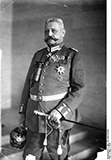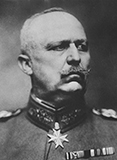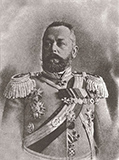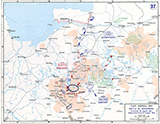Prior to the start of World War I, Russia boasted one of the largest militaries in the world. In 1914, their army consisted of nearly six million conscripts, all of whom were victims of the growing sense of militarism and paranoia sweeping Europe in the years before the war. Despite the tactical advantage of size, the Russian Imperial Army was poorly trained and ill-equipped for a modern war. Still, the Germans feared nothing more than a war with Russia and its seemingly inexhaustible supply of men.
Germany’s fear of Russia is best represented in the “Willy-Nicky Telegrams” that were exchanged between Czar Nicholas II and Kaiser Wilhelm II in the days before the war began. The Kaiser knew that a war with Russia would put tremendous hardship on his soldiers and resources despite their military superiority. Great effort was made between the two to avoid fighting each other, but it was of little use. Both Germany and Russia were committed to their respective alliances and the war began in late July, 1914.
For years, Germany had feared wars with France or Russia. German leaders knew that a war with either country would enact the alliance they shared and Germany would be stuck in the middle of two powerful enemies. In 1905, German Commander Alfred von Schlieffen drafted the infamous battle plan that would bear his name. In the Schlieffen Plan, Germany would quickly mobilize and attack France, sweeping through Belgium, conquering France in a matter of weeks. Following France’s destruction, German forces would race east and take on the slowly mobilizing Russian forces. Schlieffen created his plan based on the fact that Russia would be slow to mobilize and France would be quickly conquered.
If World War I had occurred in 1905, Schlieffen would have likely seen his plan succeed, but by 1914 the game had changed. France was a much stronger force and Russia had grown industrially, laying railroads that would aid in moving troops to the Eastern Front quicker than anticipated. Nonetheless, when World War I began, Germany dusted off the Schlieffen Plan and hoped for the best.
Following the plan, German leaders sent the majority of their army into Belgium and France. One army, the Eighth, was sent to defend Germany’s Eastern border. Two weeks after the war began, Russia kept its promise to France and invaded Germany despite their lack of preparedness.
The early days of Russia’s invasion of East Prussia seemed to be going well. The German populace was in a panic as the Russian army quickly pushed their way into Gumbinnen where they defeated an overzealous German Army. Outraged at their defeat, German Chief of Staff, Helmuth von Moltke, removed commander Maximilian von Prittwitz and replaced him with future stars, Paul von Hindenburg and Erich Ludendorff.
Despite the embarrassing and concerning defeat, the gods of war seemed to still be with Germany. By chance, a priceless note outlying the Russian plan of attack was found on a dead soldier. Equipped with this information, Hindenburg and Ludendorff halted the German retreat and planned an attack of their own.
Much like the French at the Marne, the Battle of Tannenberg would be aided by the use of aerial reconnaissance. German planes were used to observe the Russian movements and it was noticed that the Russian advance led by General Alexander Samsonov’s Second Army had been halted. Seeing an advantage, German cavalry remained facing Samsonov while additional forces were quickly moved the north and south of Samsonov’s line.
On August 26, 1914 the Germans began their flanking attack against Samsonov’s unsuspecting army. By August 29, the Germans had completely surrounded and cut off Second Army. Realizing his defeat, Samsonov decided to end his own life. In the end, over 90,000 Russians were taken prisoner and would serve out their days in POW camps or as laborers for the German war effort.
The Germans emerged from the Battle of Tannenberg victorious and Generals Hindenburg and Ludendorff were now national heroes. For now, it seemed the Germans had the Russian threat under control.
-WD
Additional Photos
 Paul von Hindenburg |
 Erich Ludendorff |
 Russian Commander Alexander Samsonov |
Related Lesson Plans
Further Reading
- First World War.com: Battle of Tannenberg
- First World War.com: General Samsonov Bio
- First World War.com: General Hindenburg Bio
- First World War.com: General Ludendorff Bio
- Military History Online: Battle of Tannenberg
First Posted: 09/01/2014





